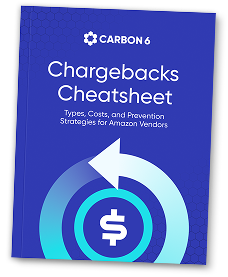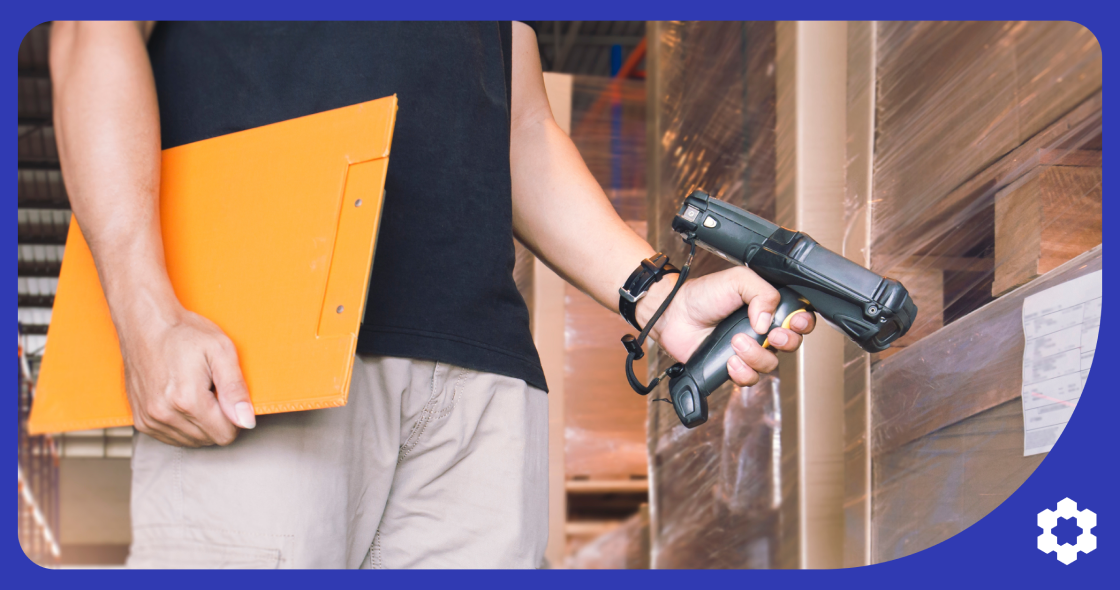Listen to This Article
Top Amazon Sellers News This Week
This week’s Amazon seller roundup highlights a key vendor reminder and rural market moves by Amazon and Target.
- Upcoming ASN Version 2 labelling deadline: For 1P Vendors selling in Europe, Amazon has begun issuing reminders that new pallet and box labelling requirements will take effect starting August 1, 2025 for all EU/UK Vendor shipments. Compliance is critical to avoid operational disruptions or potential penalties.
- Amazon and Target set their sights on rural America: Amazon is investing $4 billion to grow its rural delivery network, pledging faster service, 200+ new stations, and 100,000 jobs. Target, meanwhile, is opening full-sized stores in small towns, giving long-overlooked communities the in-person retail experience they’ve been asking for.
Read on for a full breakdown of this week’s key Amazon updates and what they mean for your business.
Amazon Vendor News: ASN Version 2 Labelling Requirements Rollout August 1
Amazon is tightening the screws on its supply chain standards, and vendors need to act fast.
What is Amazon ASN Version 2?
Amazon Advanced Shipment Notification (ASN) is an electronic message sent by vendors to inform Amazon in advance about the contents, packaging, and shipment details of an incoming delivery.
For improved visibility, accuracy, and speed, Amazon rolled out ASN Version 2 in 2024: June 1st in the EU/UK and July 1st in the US/Canada. This update introduced more granular tracking and labelling requirements for shipments, not just at the shipment level, but now down to each pallet and each box. In contrast, Version 1 only required basic data such as order, item, quantity, and box number.
New ASN Labelling Requirements
Starting 1 August 2025, Amazon is enforcing new labelling requirements for shipments to EU and UK fulfillment centers. For example, the company now requires the use of Serialized Shipping Container Code (SSCC) or Amazon Container Code (AMZNCC) barcodes across both single-SKU and mixed-SKU shipments.
Vendors who aren’t ready risk more than just a slap on the wrist: chargebacks, shortages, and shipping delays could become costly consequences.

The new Amazon ASN requirements apply to all EU/UK shipments, including via the Pallet Ordering program (Acapulco). Here’s how to comply:
Non-Palletized Single-SKU Boxes
- Labelling boxes with only Global Trade Item Number (GTIN) barcodes is no longer enough. You must also label each box with either SSCC or AMZNCC.
Single-SKU Pallets
- Each pallet must be labeled on at least two sides—ideally all four—with either an SSCC or AMZNCC barcode, along with the text ‘Single-SKU’ or ‘Single-ASIN’.
- Each box on the pallet must have GTIN (must be enrolled in Goldlist Receive) or SSCC/AMZNCC.
Mixed-SKU or Mixed-ASIN Pallets
- Label pallets with text “mixed-SKU” or “mixed-ASIN” and SSCC or AMZNCC barcodes on two or all four sides.
- Each box on each pallet must have either GTIN, SSCC, or AMZNCC.
How Amazon EDI DESADV Works Under ASN Version 2
Electronic Data Interchange – Despatch Advice (EDI DESADV) is an electronic message format vendors use to notify Amazon about the details of a shipment before it arrives. This advance notice allows Amazon to prepare its fulfillment centers to receive the goods more efficiently and accurately.
Vendors can opt to use EDI to transmit ASNs or manually create ASNs via Vendor Central. So, if you’re using (or planning to use) EDI DESADV to send ASNs, Amazon’s new requirements apply to how information is structured in your messages.
New EDI Codes Now Supported
Amazon’s EDI system now accepts more identifiers to meet GS1 standards and improve shipment traceability.
- Serialized Shipping Container Code (SSCC)
- Standard Carrier Alpha Code (SCAC)
- Carrier Global Location Numbers (GLNs)
Pallet-Level Mapping
Vendors must indicate exactly which boxes are on which pallets. For instance, box 1 to 30 is on pallet #1. Amazon can then scan a pallet’s SSCC barcode and instantly match it to the correct purchase order and quantity.
This is easier for single-SKU pallets. For mixed pallets, you’ll need to assign each box to a specific pallet. See below.
Hierarchical Box Tracking
Vendors must list which boxes are on which pallet and what items are inside each box. This deeper level of detail enables better traceability, particularly for mixed-SKU pallets.
Small Parcel Shipment Tracking
Previously, only one tracking number was needed per shipment. Now, each non-palletized box must now include its own tracking number in the ASN. This box-level tracking can help improve delivery issue resolution and reduce shortages.
The Chargeback Risk Is Real
Although there are a couple of months to upgrade into ASN Version 2, Amazon has already signaled that chargebacks are coming.
But the biggest financial risk? Shortages caused by incorrect or missing pallet data. A handful of untraceable boxes could lead to disputes, inventory gaps, and lost revenue.
Stop losing money to Amazon vendor chargebacks with ChargeGuard. Our automated deduction management solution identifies and disputes fees with a 99% success rate, putting money back in your pocket without the hassle. Start your free recovery audit now.
Remember, though the labelling deadline is August 1, 2025, early compliance helps avoid bottlenecks. Use this time now to test and refine your processes without penalties.
Amazon vs. Target Showdown in Small-Town America
Amazon and Target are pushing into rural markets, bringing both opportunity and tension for sellers and local businesses.
$4B Amazon Rural Delivery Investment
Amazon is investing $4B to expand its rural delivery network by 2026. The plan aims to:
- Add 200 new delivery stations to reach underserved regions.
- Deliver over a billion more packages per year to rural customers.
- Create over 100,000 jobs.
Areas often overlooked by traditional carriers due to high costs like Milton, FL, and North Pole, AK will get faster Prime delivery. But sellers are wary, with some criticizing Amazon’s delivery reliability and labor practices. Strategically, this expansion is seen as a move to outpace Walmart’s growing same-day delivery reach.
Target Expansion Plans: Charm Offensive or Big-Box Bulldozer?
Meanwhile, Target is taking its iconic red bullseye to new pastures (quite literally). Once focused on urban micro-stores, the retail giant is now opening full-size, 100,000+ square foot stores in towns like:
- Southern Pines, NC (population ~16,700)
- Quincy, IL (population ~38,188)
- South Lake Tahoe, CA (population ~21,225)
Target’s goals are twofold:
- Use stores as logistics hubs to support online fulfillment.
- Capitalize on pent-up demand from areas long awaiting accessible, affordable retail.
Modern Retail reports that small-town residents once relied on Amazon, but are now flocking to new Target stores, often at the expense of local shops. Target’s arrival is also spurring new investment, with chains like Raising Cane’s and other retailers following its lead.
What this Retail Expansion Race Means for Sellers
Pros:
- Higher potential customer base in rural markets.
- Better delivery times to more regions.
- Expanded fulfillment infrastructure can reduce delays and improve delivery metrics.
Cons:
- Higher service expectations from customers expecting big-brand service levels.
- Delivery challenges in hard-to-navigate areas.
- More competition from in-store retail.
Amazon and Target are redrawing the retail map. As these companies carve out territory in rural America, you need to adapt logistics strategies and localize for changing customer bases to keep pace.
Other Amazon Seller Updates This Week
1. Submit Prime-Exclusive Price Discounts for Prime Day 2025
Sellers can schedule Prime-Exclusive Price Discounts with a new bulk upload option (up to 500 SKUs) and only pay the $100 event fee if at least one item sells, making it a low-risk, high-impact way to boost visibility and drive conversions.
2. Amazon Limits Buyer-Seller Messaging Flexibility
Sellers can no longer manually tag messages as “[Important]” to override buyer opt-outs. Amazon now decides if a message is essential for order completion. While Amazon recommends using its message templates, many sellers find them too restrictive, limiting effective customer service and fueling frustration over yet another trust-eroding change.
3. Streamline Promotions with Bulk Coupon Creation
Amazon now allows sellers to generate up to 100 coupons in a single upload, including Subscribe & Save, Reorder, and standard coupon types, which is ideal for high-volume sellers running frequent campaigns.
4. Advertising and Branding Tools Now Available in Ireland
Sellers and vendors can now run Sponsored Products and Sponsored Brands ads on Amazon.ie and create brand storefronts, opening a new market for awareness, discovery, and sales in Ireland.
Expand your reach with DSP Prime. Our expert-managed advertising solution leverages Amazon’s first-party data to connect your brand with high-intent audiences across websites, apps, and streaming platforms. Get your customized growth plan now and launch in just 10 days
5. Simplify EU Cross-Border Shipments with Amazon’s Premium FTL Service
Amazon has launched a premium full truckload (FTL) shipping solution for UK-to-EU shipments that includes customs clearance, brokerage, and transport. This program is all handled in partnership with RXO and AVASK to reduce friction and improve transit speed.
Adapt Fast or Fall Behind
Amazon’s ASN Version 2 rollout demands greater shipment accuracy, while Amazon and Target’s rural expansions create new opportunities and pressures for sellers. Consider these top tips to adapt and thrive:
- Prioritize Early Compliance: Begin implementing ASN Version 2 labelling and EDI updates now. Use this time up to Aug. 1st to test your systems thoroughly, identify gaps, and train your team to avoid chargebacks and delays.
- Enhance Data Accuracy: Invest in software or partners that support granular pallet and box-level tracking. Accurate mapping of shipments to pallets reduces disputes and inventory shortages, protecting your margins.
- Leverage Technology Solutions: Use automation tools like ChargeGuard to proactively manage and dispute vendor chargebacks.
- Rethink Your Logistics: Leverage Amazon’s rural expansion to reach new customers, and consider 3PLs or local warehouses to stay flexible and meet rising delivery expectations.
For nearly four years, we’ve kept sellers informed with our Amazon Sellers Newsletter, publishing over 200 issues packed with policy changes, announcements, and community events. Subscribe or share with your team to get these insights delivered weekly.








